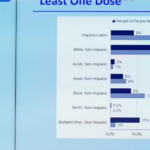|
By Catalyst
Discrepancies in Perception Among Genders
The Lure of $$Money is a key reason women enter (67 percent) and stay (61 percent) in the industry. A majority of women and men report that leaving the financial services industry would be too financially costly for them. Women and men agree that if they were to leave, the leading reason would be for more money. In addition, the allure of making a lot of money is the second-most commonly cited reason for joining the industry. “Few industries evoke more images of power and prestige than the financial services industry,” said Sheila Wellington, Catalyst president. “Wall Street is known around the world not only as a geographic location, but also as shorthand for an industry upon which entire economies turn. Because of the significance of this industry, an examination of employees’ attitudes is both timely and important.” Barriers to AdvancementA small minority of women (18 percent) report that opportunities to advance to senior leadership in their firm have increased over the past five years, compared to 50 percent of men. Sixty-six percent of women report opportunities to advance to senior leadership have improved somewhat or slightly. Large majorities of both women and men (71 percent and 64 percent, respectively) agree that it is the firm’s responsibility to adapt to meet the needs of managerial women. Less than half of both women and men (43 and 42 percent, respectively) believe it is the women’s responsibility to adapt to fit into the firm’s culture. What can firms do to minimize the barriers and retain women? Large majorities of women cite several barriers to women’s advancement in their firms. Most men, however, only cite women’s commitment to family and lack of line or general management experience. When asked about the prevalence of harassing behaviors in their current firms, 32 percent of women and 13 percent of men report that they have experienced sexual harassment and/or work in a sexually-harassing environment. Responses to the following five components of sexual harassment include:
Purpose of StudyIn undertaking this study, Catalyst’s ultimate goal is to provide financial services firms with a solid foundation upon which to build change for women. Thus, the report contains a substantial section on recommendations and solutions for companies. Recommendations include (I) establish and communicate senior leadership commitment; (II) create a firm-wide strategy to develop an inclusive culture; (III) create a formal and visible career planning mechanism; (IV) support employee needs to balance work and personal life; and (V) hold managers accountable for creating an inclusive culture. The full report details several factors characteristic of the majority of financial services firms that necessitate unique structuring of implementation approaches. MethodologyCatalyst surveyed more than 2,200 women and men nationwide employed at seven leading securities firms. In addition to the survey, Catalyst conducted nine focus groups of women and men in Chicago, San Francisco and New York. Profile of Catalyst Survey Respondents. A total of 838 individuals responded (38 percent) to Catalyst’s survey: 482 of the respondents are women (57.5 percent) and 356 are men (42.5 percent). Eighty-nine percent of respondents are white; 11 percent are people of color.
Women’s Representation in the Industry-at-Large. 11.3 percent of corporate officers in the securities industry are women, compared to 12.5 percent nationally, according to Catalyst’s 2000 Census of Women Corporate Officers and Top Earners. Women in Financial Services: The Word on the Street, an independent study, was undertaken by Catalyst under the terms of the settlement agreement in the case of Martens, et al. vs. Smith Barney. (S.D.N.Y., 96 Civ. 3779) |
||
|










